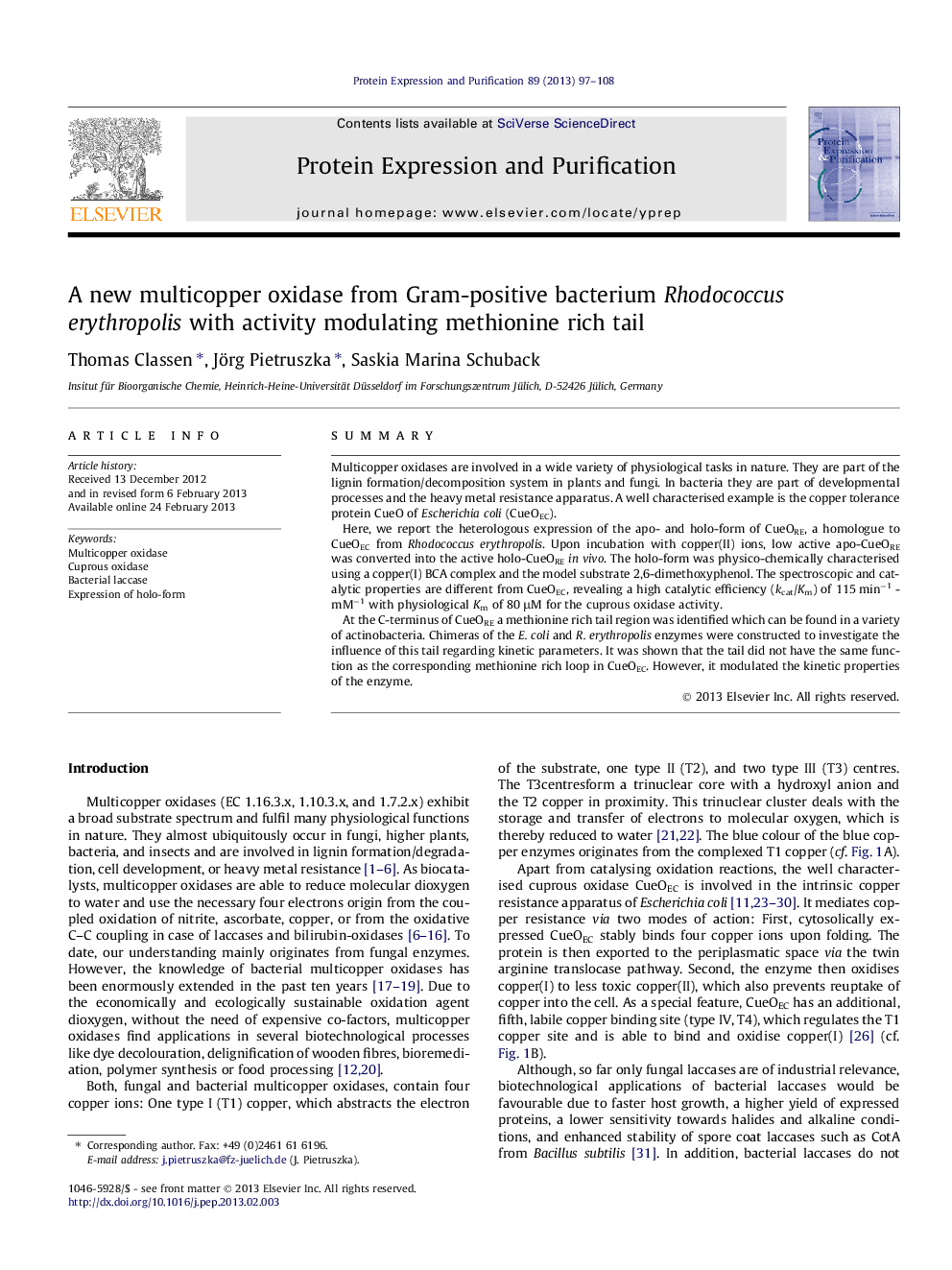| Article ID | Journal | Published Year | Pages | File Type |
|---|---|---|---|---|
| 2020716 | Protein Expression and Purification | 2013 | 12 Pages |
SummaryMulticopper oxidases are involved in a wide variety of physiological tasks in nature. They are part of the lignin formation/decomposition system in plants and fungi. In bacteria they are part of developmental processes and the heavy metal resistance apparatus. A well characterised example is the copper tolerance protein CueO of Escherichia coli (CueOEC).Here, we report the heterologous expression of the apo- and holo-form of CueORE, a homologue to CueOEC from Rhodococcus erythropolis. Upon incubation with copper(II) ions, low active apo-CueORE was converted into the active holo-CueOREin vivo. The holo-form was physico-chemically characterised using a copper(I) BCA complex and the model substrate 2,6-dimethoxyphenol. The spectroscopic and catalytic properties are different from CueOEC, revealing a high catalytic efficiency (kcat/Km) of 115 min−1 mM−1 with physiological Km of 80 μM for the cuprous oxidase activity.At the C-terminus of CueORE a methionine rich tail region was identified which can be found in a variety of actinobacteria. Chimeras of the E. coli and R. erythropolis enzymes were constructed to investigate the influence of this tail regarding kinetic parameters. It was shown that the tail did not have the same function as the corresponding methionine rich loop in CueOEC. However, it modulated the kinetic properties of the enzyme.
Graphical abstractFigure optionsDownload full-size imageDownload as PowerPoint slideHighlights► A new multicopper oxidase from Rhodococcus erythropolis cloned and characterized. ► A novel in vivo protocol for the formation of the active holo-form was established. ► An activity modulating methionine rich tail was found and studied.
